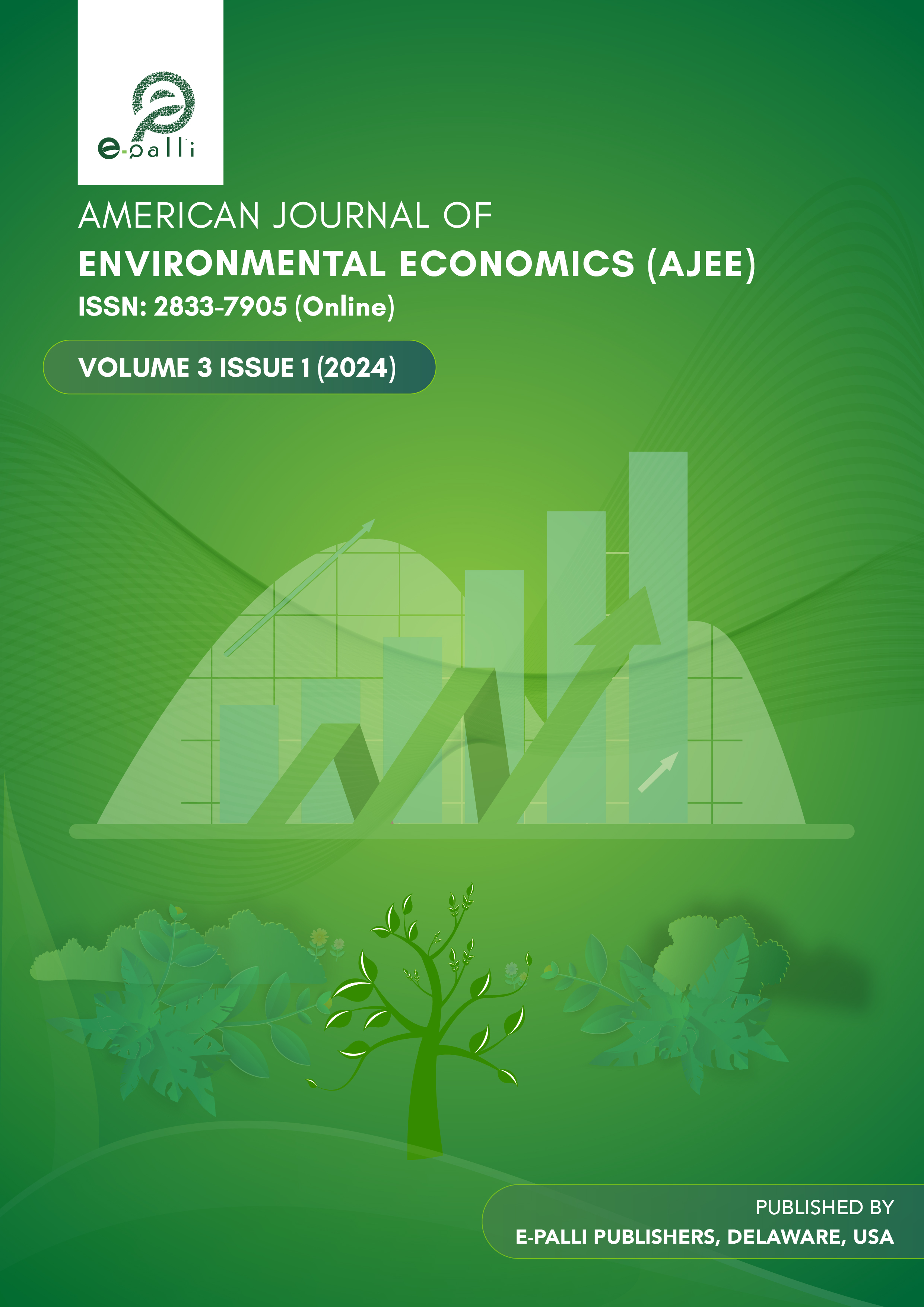Market Feasibility and Strategies for the Environment-Friendly Bricks in Bangladesh: A Learning from the Southern Part of Bangladesh
DOI:
https://doi.org/10.54536/ajee.v3i1.2763Keywords:
Brick, Eco-Friendly, Sustainable, MarketingAbstract
This paper tried to assess the market feasibility and potential strategies for environmentally friendly bricks in southern Bangladesh. To assess the feasibility, the researcher used a mixed-methods approach. A total of 120 respondents were interviewed, including customers, entrepreneurs, wholesalers, masons, and laborers. The paper found that 85% of respondents were familiar with eco-friendly products, with 85% prioritizing them when buying. They prioritize product quality and price, with bricks being the most expensive. Most respondents believed eco-friendly construction materials were sustainable, cost-effective, and environmentally friendly. However, sales of burnt bricks decreased compared to the previous year, with 30% selling 40000 pieces of bricks last year. This paper also found a growing interest in using environmentally friendly building materials, with hollow blocks being more popular. Most enterprises invested on average 225,000 BDT, with an average monthly income of 17,800 BDT. Most respondents had eight male workers, with 80% not having female workers. Moreover, the study found some market management problems, including lower prices, low capital, and lack of digital marketing issues.
Downloads
References
Amakye, S. Y. O., Abbey, S. J., Booth, C. A., & Oti, J. (2022). Performance of Sustainable Road Pavements Founded on Clay Subgrades Treated with Eco-Friendly Cementitious Materials. Sustainability, 14(19), 12588. https://doi.org/10.3390/su141912588
Amir, M. K. B. (2021). Banker Attitudes and Perception towards Green Banking. International Journal of Finance & Banking Studies, 10(2), 47–56. https://doi.org/10.20525/ijfbs.v10i2.1163
Frangieh, C. G., Saba, M., Karmaoui, D., & Lafhaj, Z. (2022). Geopolymer: a new sustainable repairing material for concrete cracks. IOP Conference Series. Earth and Environmental Science, 1123(1), 012061. https://doi.org/10.1088/1755-1315/1123/1/012061
Han, H. (2014). The norm activation model and theory-broadening: Individuals’ decision-making on environmentally-responsible convention attendance. Journal of Environmental Psychology, 40, 462–471. https://doi.org/10.1016/j.jenvp.2014.10.006
Iqbal, M., Rifat, A., & Nisha, N. (2021). Evaluating attractiveness and perceived risks. International Journal of Asian Business and Information Management, 12(1), 1–23. https://doi.org/10.4018/ijabim.20210101.oa1
Islam, G. S., Sarker, S., Sadique, M., & Shubbar, A. (2022). Non-Fired building blocks using industrial wastes. Journal of Engineering Science, 12(3), 1–10. https://doi.org/10.3329/jes.v12i3.57474
K, A. J., & Sia, S. K. (2022). Theory of planned behavior in predicting the construction of eco-friendly houses. Management of Environmental Quality, 33(4), 938–954. https://doi.org/10.1108/meq-10-2021-0249
K, A. J., & Sia, S. K. (2022b). Theory of planned behavior in predicting the construction of eco-friendly houses. Management of Environmental Quality, 33(4), 938–954. https://doi.org/10.1108/meq-10-2021-0249
Kautish, P., & Dash, G. (2017). Environmentally concerned consumer behavior: evidence from consumers in Rajasthan. Journal of Modelling in Management, 12(4), 712–738. https://doi.org/10.1108/jm2-05-2015-0021
Moon, S., Jang, D., Kim, H. S., Lee, J., & Kim, J. (2020). Importance of Government roles for market expansion of Eco-Village Development Plan Establishment Research: case study in the city of Suwon, South Korea. Sustainability, 12(24), 10293. https://doi.org/10.3390/su122410293
Paço, A. D., & Raposo, M. (2009). “Green” segmentation: an application to the Portuguese consumer market. Marketing Intelligence & Planning, 27(3), 364–379. https://doi.org/10.1108/02634500910955245
Peris, S. F., Supian, K., Hasanat, M. W., & Hossain, M. N. (2020). A mediating effect of green market orientation on the environmental performance: From a literature review to a conceptual framework. Journal of Management Info, 7(2), 92–118. https://doi.org/10.31580/jmi.v7i2.1421
Pham, A., Nguyen, Q. T., Luong, D. L., & Truong, Q. C. (2020). The development of a decision support model for Eco-Friendly material selection in Vietnam. Sustainability, 12(7), 2769. https://doi.org/10.3390/su12072769
Pham, A., Nguyen, Q. T., Luong, D. L., & Truong, Q. C. (2020b). The development of a decision support model for Eco-Friendly material selection in Vietnam. Sustainability, 12(7), 2769. https://doi.org/10.3390/su12072769
Reis, G. S. D., Quattrone, M., Ambrós, W. M., Cazacliu, B., & Sampaio, C. H. (2021). Current Applications of Recycled Aggregates from Construction and Demolition: A Review. Materials, 14(7), 1700. https://doi.org/10.3390/ma14071700
Reis, G. S. D., Quattrone, M., Ambrós, W. M., Cazacliu, B., & Sampaio, C. H. (2021b). Current Applications of Recycled Aggregates from Construction and Demolition: A Review. Materials, 14(7), 1700. https://doi.org/10.3390/ma14071700
Sapna, A. P. A., & Anbalagan, C. (2023). Sustainable Eco-Friendly Building Material – A review towards compressed stabilized earth blocks and fire burnt clay bricks. IOP Conference Series. Earth and Environmental Science, 1210(1), 012023. https://doi.org/10.1088/1755-1315/1210/1/012023
Shim, H., Kim, T., & Choi, G. (2019). Technology Roadmap for Eco-Friendly Building Materials Industry. Energies, 12(5), 804. https://doi.org/10.3390/en12050804
Sia, S. K., & Jose, A. (2019). Attitude and subjective norm as personal moral obligation mediated predictors of intention to build eco-friendly house. Management of Environmental Quality, 30(4), 678–694. https://doi.org/10.1108/meq-02-2019-0038
Suksiripattanapong, C., Phetprapai, T., Singsang, W., Phetchuay, C., Thumrongvut, J., & Tabyang, W. (2022). Utilization of recycled plastic waste in fiber reinforced concrete for Eco-Friendly footpath and pavement applications. Sustainability, 14(11), 6839. https://doi.org/10.3390/su14116839
Sumi, R. S., & Kabir, G. (2018). Factors affecting the buying intention of organic tea consumers of Bangladesh. Journal of Open Innovation, 4(3), 24. https://doi.org/10.3390/joitmc4030024
Tara, K., Singh, S., & Kumar, R. (2015). Green Banking for Environmental Management: a Paradigm shift. Current World Environment/Current World Environment, 10(3), 1029–1038. https://doi.org/10.12944/cwe.10.3.36
Vázquez-Núñez, E., Avecilla-Ramírez, A. M., Vergara‐Porras, B., & Del Rocío López-Cuellar, M. (2021). Green composites and their contribution toward sustainability: A review. Polymers and Polymer Composites/Polymers & Polymer Composites, 29(9_suppl), S1588–S1608. https://doi.org/10.1177/09673911211009372
Wang, S., Tae, S., & Kim, R. (2019). Development of a green Building Materials integrated platform based on materials and resources in G-SEED in South Korea. Sustainability, 11(23), 6532. https://doi.org/10.3390/su11236532
Downloads
Published
How to Cite
Issue
Section
License
Copyright (c) 2024 Md. Abu Shahen

This work is licensed under a Creative Commons Attribution 4.0 International License.







